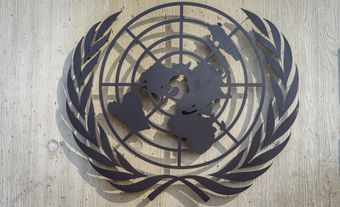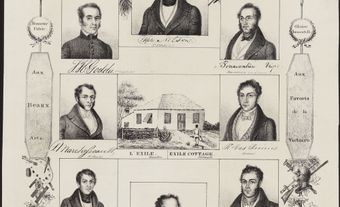This article was originally published in Maclean’s magazine on December 29, 1997. Partner content is not updated.
Like thousands of other Canadians last week, Krista Kitchen was headed home for the holidays. Flying into Fredericton from Toronto aboard Air Canada Flight 646, the 23-year-old University of Western Ontario student was looking forward to Christmas with family and friends.Plane Crash in Fredericton
Like thousands of other Canadians last week, Krista Kitchen was headed home for the holidays. Flying into Fredericton from Toronto aboard Air Canada Flight 646, the 23-year-old University of Western Ontario student was looking forward to Christmas with family and friends. But shortly before midnight on Dec. 16, as the plane descended through dense fog at Fredericton airport, Kitchen heard a loud bang, then felt the plane sway violently side-to-side. Suddenly, the cabin lights went out, plunging her and 38 other passengers into a terrifying darkness. In the next few seconds, the commuter jet skidded off the runway, plowing through snow and clipping trees before coming to a shuddering halt in a wooded area near the airstrip. Miraculously, none of the passengers or crew was killed, and most, including Kitchen, were able to slide to safety down the wingtips of the plane into knee-deep snow. "I'm very grateful to be alive," said Kitchen the day after her ordeal. "It could have been so much worse."
That view was echoed by Joe Jackson, lead investigator of a 15-member Transportation Safety Board team. After his first look at the mostly intact jet - including the eerie sight of a fir tree sticking out of the top of the fuselage near the front of the plane - Jackson told reporters: "We were just a smidgen away from having 40 people dead." At a time of year when air traffic is at its peak, the images of such a narrowly averted tragedy were disturbing enough. But even more troubling was that the crash followed two fatal mishaps: the Dec. 7 midair collision of two Cessna aircraft near Mascouche, Que., that left four dead, and the Dec. 9 crash of a twin-engine Embraer in Little Grand Rapids, Man., that killed four others. The accidents, all at airports bereft of air traffic controllers, left many asking how safe Canada's skies are.
In the wake of the Fredericton crash, federal Transportation Minister David Collenette sought to allay fears. "I want to confirm to Canadians that we have one of the safest air traffic systems in the world,"he said. His department later released statistics showing that the accident rate had steadily declined over the past decade, to 8.9 per 100,000 hours flown in 1996 from 14.1 per 100,000 in 1987. But critics charged that Ottawa's determination to pare costs through deregulation and privatization of the air industry is putting travellers at risk. In particular, the series of accidents brought renewed attention to a 1995 decision by Transport Canada to transfer federal control of the air traffic control system to a nonprofit corporation, Nav Canada - a move designed to save Ottawa more than $200 million a year. Said David Glastonbury, president of the Transport 2000 lobby group: "You have to wonder whether we've cut too much."
Air Canada came in for its own share of criticism the day after the crash when it painted over its logo on the Bombardier-built Canadair Regional jet. A spokeswoman for the airline explained that removing the logo was standard practice after a crash: "The aircraft no longer belongs to Air Canada; it is now in the possession of the insurance underwriter."
Ottawa's downsizing efforts have included a move to replace air traffic control towers at smaller airports - including Fredericton's - with cheaper flight servicing stations. Nav Can spokesmen stressed that the flight service specialist on duty provided Air Canada 646 with the same information about runway and weather conditions as an air traffic controller would at a larger airport. In either case, it is up to the pilot to make the final call on whether to land. Investigators said last week that the pilot, Donald MacFarlane, intended to land, but changed his mind at the last moment. As he tried to abort, the plane's right wing hit the runway.
It took emergency crews about 20 minutes to reach the crash site - about one kilometre from the terminal - a response time that Transport Canada says was reasonable given the snow, fog and darkness. But for the passengers - some of whom began to walk towards the terminal before the rescue team arrived while others huddled in the woods - it seemed like an eternity. Kitchen recalls that there was a smell of jet fuel, prompting fears the plane might explode. She could also hear cries from inside the plane, where at least six people remained pinned under seats and debris.
It took until 2:30 a.m. to free the last of the passengers. In all, 35 people were treated for injuries ranging from broken limbs to cuts and bruises. At week's end, nine remained in hospital. Meanwhile, Air Canada offered all passengers $5,000 for their "trauma and stress" - a move some lawyers saw as an attempt to ward off lawsuits. As traumatic as the experience had been, for most of the survivors last week was also a time to count blessings. Said Kitchen: "At this point, you have to move forward."
Maclean's December 29, 1997

 Share on Facebook
Share on Facebook Share on X
Share on X Share by Email
Share by Email Share on Google Classroom
Share on Google Classroom


